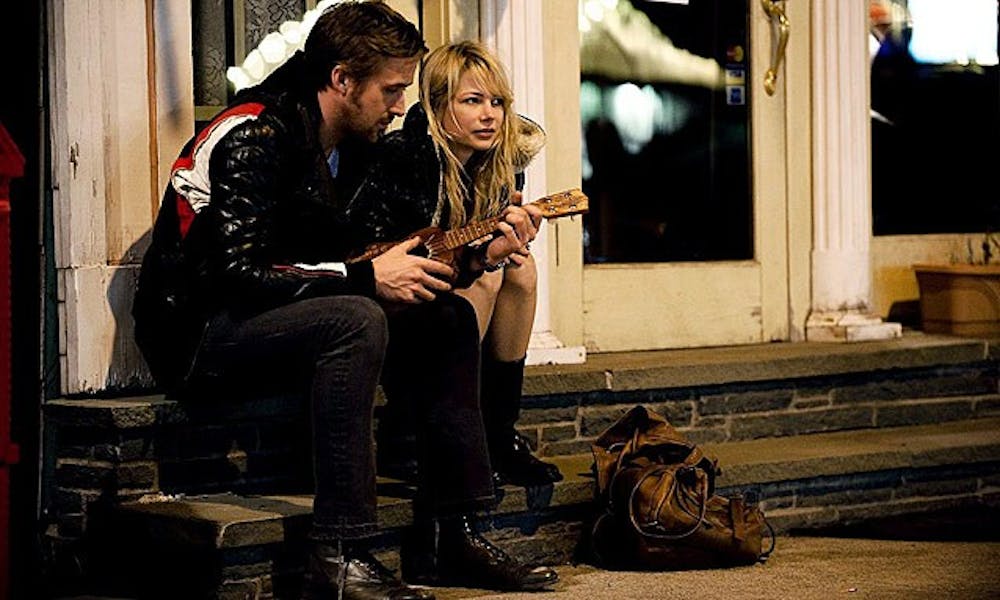At its core, the long-awaited Blue Valentine is a love story. A portrait of two people, Dean (Ryan Gosling) and Cindy (Michelle Williams), who fall in and out of love, the film can be summed up in the song that Dean serenades Cindy with on their first date: “You always hurt the ones you love.”
The movie has no clear beginning and no clear end. From the several years of pre-/post-marriage examined, scenes are stitched together like a pastiche of memories in a trajectory with no particular order. This framework can be irritating at times, because it sacrifices any sort of definitive narrative. But Blue Valentine does not hope to impart an epic tale—it is a raw exploration of human emotions and the inevitable struggles that accompany unconditional love.
In terms of acting, Williams and Gosling are near perfect. But that was expected, given that they both individually spent years doing character studies for their roles. In addition, the two lived in a house together for a month between filming the falling in and falling out of love scenes. The two are archetypes of classic romantic-character tropes: Gosling is the hopeless romantic, Williams the more rational counterpart. Eventually, the lovers feel unfulfilled, and the battle to sustain their marriage is one that will leave viewers with little hope.
The emotional grittiness of the film—which includes a trip to the abortion clinic and a night in a sex motel—is by far its strongest suit. The unfiltered depictions of the nuanced moments in these characters’ lives, whether love or hate, is a treatment left to be desired by many other films nowadays.
Despite such successful portrayals, the prototypical cliches that Dean and Cindy embody weaken the gravity of the plot. Blue Valentine fills in the gaps between the seemingly mundane details of what it means to be in a relationship.
Get The Chronicle straight to your inbox
Sign up for our weekly newsletter. Cancel at any time.

